Eye Test Explained: What to Expect at Your Eye Examination
Eye tests are essential for maintaining optimal eye health and ensuring clear vision.
Whether you're due for your annual check-up or experiencing vision changes, understanding what to expect during an eye exam can help alleviate any concerns and make the process smoother.
In this guide, we'll walk you through the various steps involved in an eye exam, from the initial tests to receiving your prescription and selecting the right lenses for your needs.
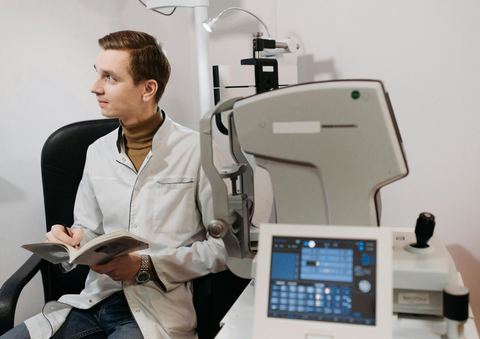
1. Pre-Test Assessment:
Before your eye exam begins, the optometrist or ophthalmologist will conduct a pre-exam assessment to gather information about your medical history, any existing eye conditions, and any specific concerns you may have regarding your vision. This information helps them tailor the exam to your individual needs and identify any potential risk factors or areas of concern.
2. Visual Acuity Test:
The visual acuity test, commonly known as the "eye chart" test, is one of the first tests performed during an eye exam.
You'll be asked to read letters or symbols of varying sizes from a distance to assess the clarity and sharpness of your vision. This test helps determine if you need corrective lenses and provides a baseline for measuring any changes in your vision over time.
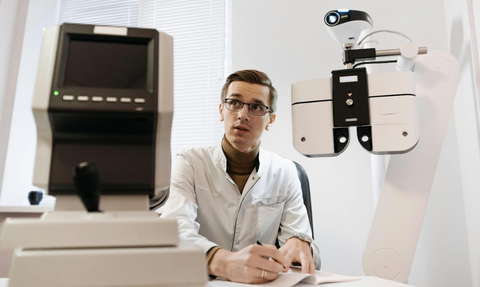
3. Refraction Test:
During the refraction test, the optometrist is simply checking how well your eyes can focus on objects.
This test helps them figure out if you have any common vision issues like nearsightedness (where you see things better up close), farsightedness (where things far away are clearer), or astigmatism (where your vision is blurry or distorted). It's a standard part of an eye exam and nothing to worry about!
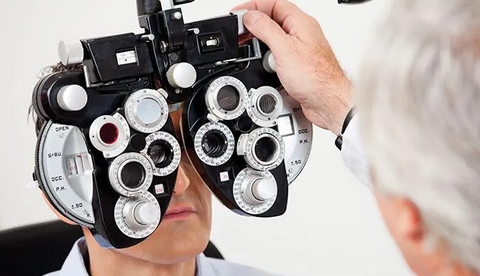
You'll look through a phoropter (a phoropter is a device used during an eye exam to measure a person's refractive error and determine the appropriate prescription for glasses or contact lenses. It contains multiple lenses that can be adjusted by the optometrist to find the combination that provides the clearest vision for you). This device is commonly used in eye clinics and optometry practices.
4. Eye Health Evaluation:
After assessing your vision, the optometrist will conduct a comprehensive evaluation of your eye health.
During the eye health evaluation, the optometrist will carefully look at both the outside and inside of your eyes using special tools and methods. They're checking to make sure everything looks healthy and normal. This includes examining the front part of your eyes, like your cornea and iris, as well as the back part, called the retina.
They're on the lookout for any signs of eye conditions, such as glaucoma, cataracts, macular degeneration, and diabetic retinopathy. These exams are routine and help catch any issues early on, so there's no need to worry. It's just like a check-up for your eyes!

5. Additional Tests:
Depending on your individual needs and any specific concerns identified during the exam, the optometrist may perform additional tests to assess various aspects of your eye health and function. These tests may include:
Tonometry: This test measures the pressure inside your eye, which is called intraocular pressure. It's done to check for glaucoma, a condition where high eye pressure can damage the optic nerve and lead to vision loss. During this test, the optometrist might use a device that blows a puff of air onto your eye or gently touches it with a tool to measure the pressure.
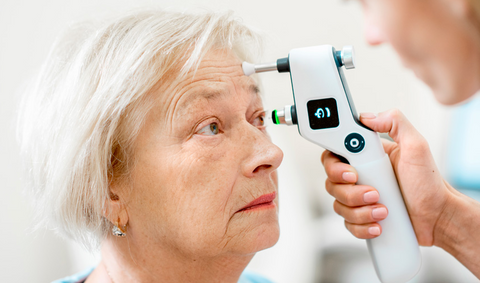
Visual Field Testing: This test checks your peripheral vision, which is your side vision. It's important because conditions like glaucoma or certain neurological disorders can cause loss of peripheral vision. During the test, you'll sit in front of a machine and focus on a spot in the centre while lights or dots appear in different areas of your field of view. You'll press a button whenever you see a light, and the results help the optometrist assess the health of your visual field.
Pupil Dilation: This involves using eye drops to widen (dilate) your pupils, which allows the optometrist to get a better view of the back of your eye, including the retina and optic nerve. It's like opening a window to see inside your eye more clearly. The drops might sting a little and cause your vision to become blurry temporarily, but it's a quick and painless process. After the drops take effect, the optometrist will use a special light and magnifying lens to examine the structures at the back of your eye.
These tests are all part of a comprehensive eye exam and are done to ensure your eyes are healthy and functioning properly.
If you have any concerns or questions about the tests, don't hesitate to ask your optometrist—they're there to help!
6. Prescription and Lens Selection:
Once the eye exam is complete, the optometrist will provide you with a prescription for corrective lenses if needed. This prescription includes specific measurements and parameters for your lenses, such as sphere, cylinder, and axis for astigmatism correction.
If you've chosen to purchase your glasses from PRET A VOIR, you can use this prescription form to select your lenses online.
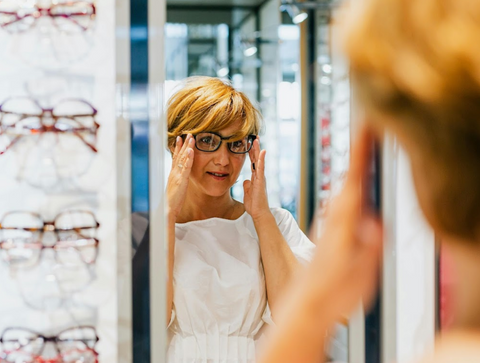
7.Ordering Your Prescription Lenses Online:
When you're ready to order your prescription glasses from PRET A VOIR, the checkout process is simple.
As you finalise your frame selection, you'll see options on the right-hand side of your screen, typically labelled "Add to Cart" or "Add Lenses." Please select “Add Lenses”.
Opting for the "Frame Only" option means you'll receive the glasses with demo lenses, which are temporary plastic lenses fitted instead of optical lenses. These demo lenses often have brand logos emblazoned on the front, which can obscure your vision. We recommend choosing the "Frame Only" option only if you plan to have your lenses glazed by another optician.
If you’re ordering your prescription lenses with us, you have your details, have chosen your frame and selected your lens type, you can provide your prescription information by clicking the "Single Vision" or "Varifocal/Progressive (UK Only)" options. You can upload your prescription as a PNG, JPG, or PDF file, enter your details manually, or opt to email us later if you have any questions or uncertainties.

Don’t panic if you're unsure how to interpret your prescription, our fully trained team is here to assist you. You can choose to upload your prescription for expert guidance, and we'll ensure your lenses are crafted to meet your exact requirements.
To ensure your lenses fit perfectly, it's crucial to provide your Pupillary Distance (PD) measurement—the distance between the centre of your pupils. This measurement is essential for positioning the lens correctly to your eyes, minimizing distortion and ensuring optimal vision clarity. If you haven't been provided with your PD measurement, you can easily measure it using a smartphone app like GlassesOn for Android users or EyeMeasure for Apple devices.
We take great pride in the quality and craftsmanship of our lenses, which is why we offer three different lens brands with a selection of options to suit your vision requirements. Our lens brands include TruOptics, Essilor, and Zeiss, each offering unique benefits tailored to your needs. If you are unsure of which brand you’d like to choose, please contact us. We will be more than happy to assist you and talk through the benefits of each brand to make your selection process as easy as possible.

Finally, we offer four lens package options ranging from standard to super-thin, allowing you to choose the thickness that best suits your prescription and aesthetic preferences. Our experienced team is always available to provide guidance and advice on selecting the best lens package for your needs, ensuring you receive the perfect eyewear solution tailored to you.
Regular eye exams are crucial for maintaining optimal eye health and ensuring clear vision.
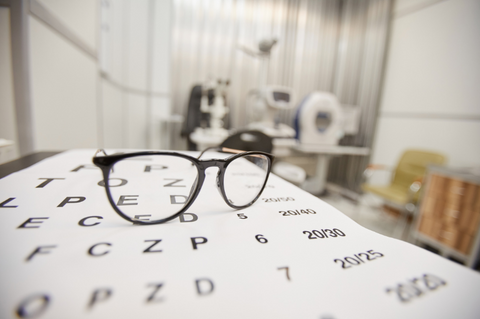
By understanding the various steps involved in an eye exam, from the pre-exam assessment to the selection of prescription lenses, individuals can alleviate any concerns and make the process smoother. During the exam, optometrists conduct tests to assess visual acuity, refractive error, and overall eye health, identifying any potential issues or risk factors.
Following the exam, individuals can order their prescription lenses online through PRET A VOIR, where they'll have access to a variety of lens brands and coatings to suit their needs. With expert guidance and assistance from our trained team, customers can confidently select the perfect eyewear solution tailored to their individual preferences and requirements. By prioritizing eye health and investing in quality eyewear, individuals can enjoy clear vision and optimal eye comfort for years to come.
Au Revoir,
PRET A VOIR










0 comments